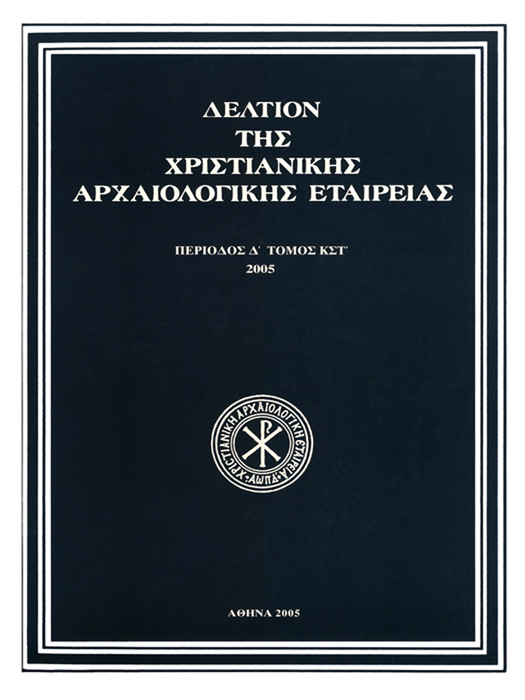The archaelogical find as historical evidence. The settlement of Goths in the plain of Central Macedonia and the establishment of the episcopal complex at Louloudies

Abstract
The paper studies in detail the Gothic issue during the last 30 years of the 5th century, in order to define the causes of the establishment of the episcopal complex at Louloudies, as a result of the settlement of Theodoric’s Goths at Pydna and five other cities in Central Macedonia, during the period of AD 479-483. His stay at Pydna resulted in its upgrading to an episcopal seat, while the people with their bishop moved 8 km. to the south, where mutatio Anamon was located, and erected a four-towered episcopal complex. Due to the vicinity with the Goths and the fear that they would attack, the complex took the form of a four-towered fort, as in Roman camps. The episcopal complex that included a basilica, an episcopal palace and galleries, was protected by a wall, a double-towered gate and four towers at the corners, proving the special characteristics and circumstances under which it was founded.
Article Details
- How to Cite
-
ΜΑΡΚΗ Ε. (2013). The archaelogical find as historical evidence. The settlement of Goths in the plain of Central Macedonia and the establishment of the episcopal complex at Louloudies. Deltion of the Christian Archaeological Society, 34, 1–10. https://doi.org/10.12681/dchae.1702
- Section
- Articles
The copyright for articles in the journal Deltion of the Christian Archaeological Society (henceforth Deltion) is retained by the author(s), with first publication rights granted to the journal and to EIE/ EKT the right to store and communicate these articles to the public via its information infrastructures. By virtue of their appearance in this journal, articles are free to use with proper attribution for non-commercial uses under a ShareAlike obligation. The Christian Archaeological Society and EIE/EKT retain the worldwide right to reproduce, display, distribute, and use articles published in the Deltion in all formats and media, either separately or as part of collective works for the full term of copyright. This includes but is not limited to the right to publish articles in an issue of the Journal, copy and distribute individual reprints of the articles, authorize reproduction of articles in their entirety in another publication of the Christian Archaeological Society, and authorize reproduction and distribution of articles or abstracts thereof by means of computerized retrieval systems.







